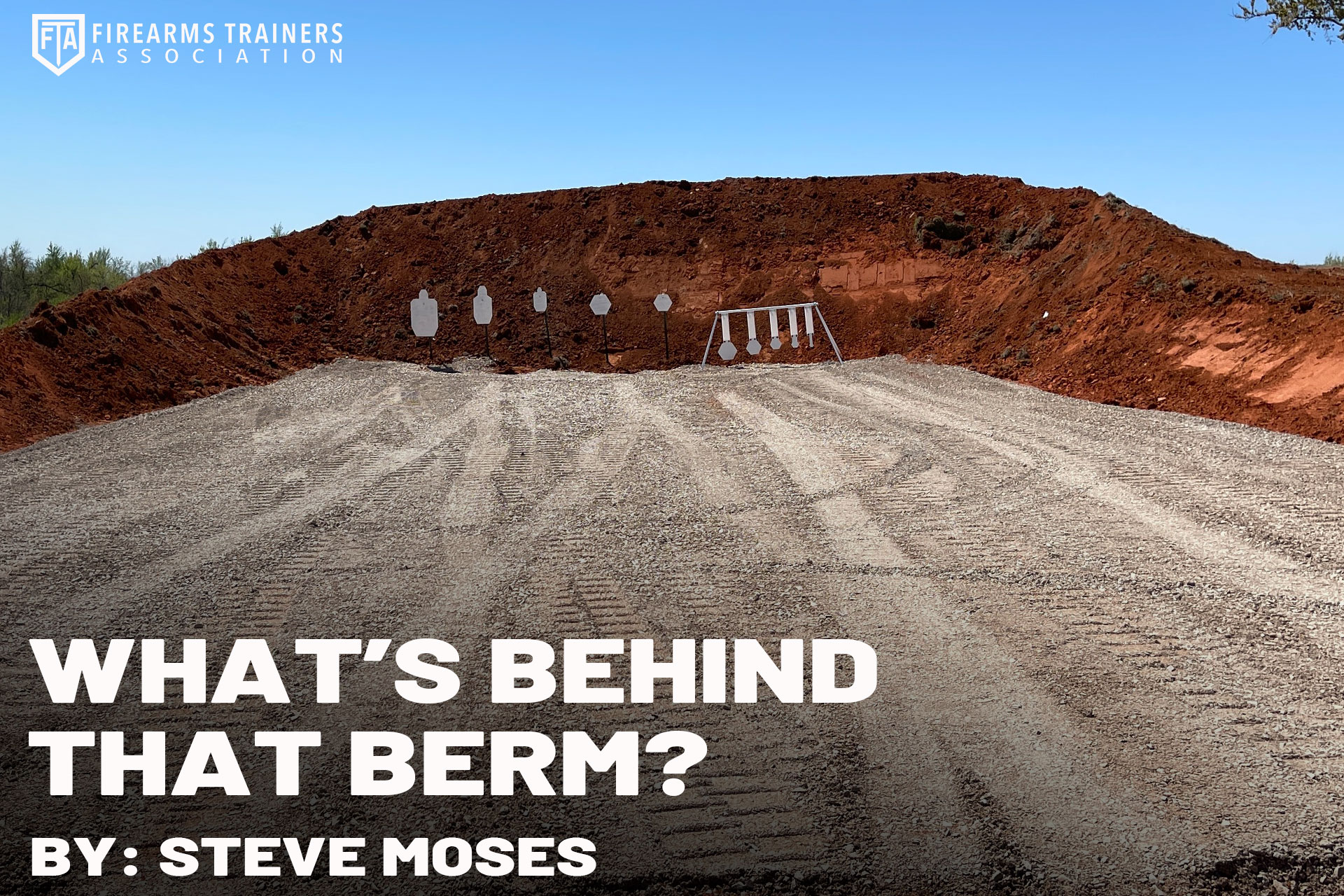
Posted on July 17, 2023 by Justin Collett in Steve Moses
WHAT’S BEHIND THAT BERM?
I have been teaching for nearly thirty years, and in that time my partners and I have taught exactly two classes at indoor ranges. One of our major concerns, other that gunshot-related injuries, broken ankles, and heat exhaustion, is bullets leaving the range. No matter how hard we may try there is no possible way to control every single action a student on the line might take in a class, and twice I have seen students negligently fire a round from a rifle held at high ready while the instructor was explaining the upcoming course of fire. During a law enforcement-only Dignitary/Witness Protection course I attended years ago I flagged down one of the instructors and pointed out to him that at one end of a relatively low berm there was a depression in the top of the berm with a target stand right in front of it, and from where I was standing I could see the roofs of multiple houses in a subdivision that was maybe 100 yards away. I am also aware of two instances in which persons who were not students were shot, with one being a fatality, by rounds that went over a berm.
A handgun bullet fired on a horizontal plane can travel over 100 yards before it hits the ground, and even then skip a considerable distance with enough velocity to injure or kill. Under certain environmental conditions a 9mm round fired at an optimal angle may travel as far as a mile before it strikes the ground. I have read, but am unable to confirm, that they may go as far as 2,000 yards. It may not matter that almost all of the bullet’s energy is spent when it reaches its final destination. If a homeowner finds a bullet in his or her front yard there is a chance that either the range owner gets sued or the range gets shut down by a governing body.
As I said before, firearm trainers are unable to control every single thing their students do. Regardless of whether the range is an outdoor range or an indoor range with walls, ceiling, and backstop, all four safety rules should be enforced throughout the class. We probably should remember that when we tell them that they should never point the muzzle at anything they are not willing to destroy or kill many students will not realize that this includes objects and people that may be hundreds of yards away. Letting them know this can happen may not only lessen the chances that a bullet goes over the berm but also help drive home the message that the same is true almost anytime their handgun is out of the holster (most especially while in an urban or suburban environment).
Another action that I try to take every time I teach on an outdoor range that I am not familiar with is to see if I can find out what is behind the berm. I use Google Earth to first find the range and then scroll out in order to see what is behind. If the berm is in front of a hill, I will typically ask the landowner for a topographical map that uses contour lines so that I can get an approximate idea of the height of the hill. The berms that we used in several classes were relatively short, but the landowners had placed them right in front of a hill that was twenty feet or more in height. Whenever a berm is in front of a hill I will either go around the berm or climb it just to make sure there is no one or nothing behind it.
One more thing. Just because there are no structures behind the range for miles there is always going to be a chance that livestock or a farmer or rancher might be within striking range of an errant round. What that means to me is that I still need to be just as concerned about rounds over the top of the berm as I am when using a range located right in the middle of an urban area.
There is nothing that can be done to get around the fact that we are managing persons that we may or may not know who are handling real firearms loaded with live ammunition, possibly for the first time. Keeping that in the forefront of our minds every minute we are on the range with them should be a priority.